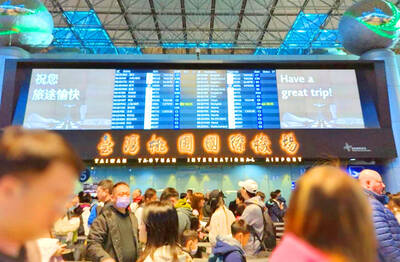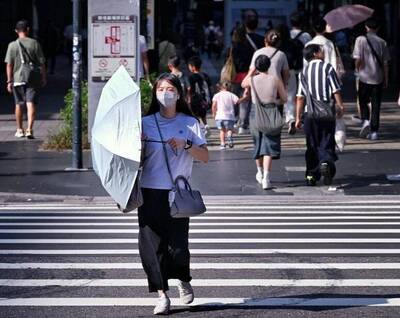The National Palace Museum in Taipei and the National Museum of Natural Science in Taichung have been ranked among the world’s 20 most popular museums of last year by a US business association.
The California-based Themed Entertainment Association (TEA) released the rankings of global museums and theme parks by attendance last week.
The National Palace Museum, home to one of the world’s largest collections of Chinese artwork and artifacts, came in 13th for attendance last year with 4.41 million visits, an increase of 1.2 percent from 2012. It ranked second in Asia, behind only the National Museum of China in Beijing.
The National Museum of Natural Science in Taichung came in 18th with just short of 3.4 million visits, a 15 percent increase from 2012.
Unsurprisingly, the Louvre in Paris was the world’s most popular museum, attracting more than 9.3 million visits. It was followed by the National Museum of Natural History in Washington in second place with 8 million visits and the National Museum of China in third place.
The Beijing museum, which welcomed 7.45 million visitors, recorded the highest growth of any museum on the list at 38.7 percent.
Rounding out the top five were the National Air and Space Museum in Washington with nearly 7 million visits and the British Museum in London with 6.7 million visits.
The largest decline on the list was seen at the Tate Modern art gallery in London (ranked 12th), where attendance dropped 8.2 percent from the previous year.
Despite the fall, the report concluded that museums had a strong year last year, with overall attendance growing over 7 percent annually.
“The UK again performed well with a number of museums up 15 to 20 percent [in attendance] … The Asian museums were notably up also,” the report said.
As for theme park attendance, nine of the top 10 spots went to Disney parks in the US, Japan and France. Universal Studios Japan, in Osaka, came in ninth.
The TEA brings together creative and entertainment-focused professionals and boasts 8,000 members from about 1,000 firms in 40 countries.

Foreign travelers entering Taiwan on a short layover via Taiwan Taoyuan International Airport are receiving NT$600 gift vouchers from yesterday, the Tourism Administration said, adding that it hopes the incentive would boost tourism consumption at the airport. The program, which allows travelers holding non-Taiwan passports who enter the country during a layover of up to 24 hours to claim a voucher, aims to promote attractions at the airport, the agency said in a statement on Friday. To participate, travelers must sign up on the campaign Web site, the agency said. They can then present their passport and boarding pass for their connecting international

Temperatures in northern Taiwan are forecast to reach as high as 30°C today, as an ongoing northeasterly seasonal wind system weakens, the Central Weather Administration (CWA) said. CWA forecaster Tseng Chao-cheng (曾昭誠) said yesterday that with the seasonal wind system weakening, warmer easterly winds would boost the temperature today. Daytime temperatures in northern Taiwan and Yilan County are expected to range from 28°C to 30°C today, up about 3°C from yesterday, Tseng said. According to the CWA, temperature highs in central and southern Taiwan could stay stable. However, the weather is expected to turn cooler starting tonight as the northeasterly wind system strengthens again

COOLING OFF: Temperatures are expected to fall to lows of about 20°C on Sunday and possibly 18°C to 19°C next week, following a wave of northeasterly winds on Friday The Central Weather Administration (CWA) on Sunday forecast more rain and cooler temperatures for northern Taiwan this week, with the mercury dropping to lows of 18°C, as another wave of northeasterly winds sweeps across the country. The current northeasterly winds would continue to affect Taiwan through today, with precipitation peaking today, bringing increased rainfall to windward areas, CWA forecaster Liu Pei-teng (劉沛滕) said. The weather system would weaken slightly tomorrow before another, stronger wave arrives on Friday, lasting into next week, Liu said. From yesterday to today, northern Taiwan can expect cool, wet weather, with lows of 22°C to 23°C in most areas,

Taiwan sweltered through its hottest October on record, the Central Weather Administration (CWA) said yesterday, the latest in a string of global temperature records. The main island endured its highest average temperature since 1950, CWA forecaster Liu Pei-teng said. Temperatures the world over have soared in recent years as human-induced climate change contributes to ever more erratic weather patterns. Taiwan’s average temperature was 27.381°C as of Thursday, Liu said. Liu said the average could slip 0.1°C by the end of yesterday, but it would still be higher than the previous record of 27.009°C in 2016. "The temperature only started lowering around Oct. 18 or 19